History of Kostroma
12th Century
Foundation
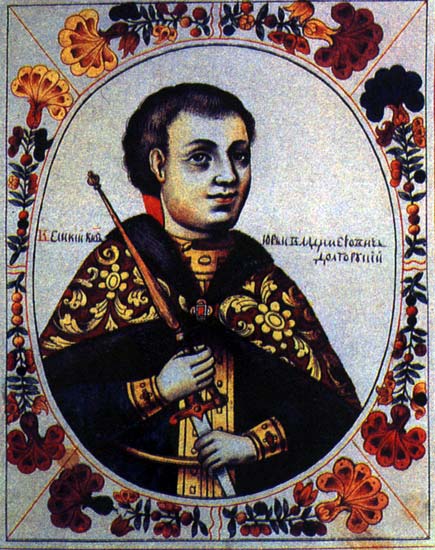
The official date of foundation of Kostroma is 1152 based on the work of the renowned historian Vasily Tatischev who claimed that the city was founded by Prince Yury Dolgoruky. However the first mention of Kostroma only came in 1213 when Prince Konstantin Vsevolodovich of Rostov burned down Kostroma which was then part of the territory of his brother and competitor - Grand Prince Yury Vsevolodovich of Vladimir.
13th Century
Kostroma Principality
In 1238 the city was sacked during the Mongol-Tatar Invasion of Rus. In 1246 upon the death of Grand Prince Yaroslav Vsevolodovich of Vladimir, Kostroma was given to Yaroslav's son Vasili Yaroslavich. In 1272 Vasili became grand prince of Vladimir, but decided to remain in Kostroma and rule from there. Vasili died without heir in 1276 and the Kostroma Principality was briefly absorbed back into the territory of the grand prince. Grand Prince Dmitry Aleksandrovich of Vladimir subsequently gave the Kostroma Principality to Prince Andrey Aleksandrovich of Gorodets. In 1293 Andrey Aleksandrovich gave Kostroma to his nephew Ivan Dmitrievich, but Ivan Dmitrievich returned it to Andrey in 1296 having inherited Pereslavl-Zalessky for himself. In 1299 Andrey Aleksandrovich gave Kostroma to his son Boris Andreevich.
Our Lady of St Theodore Icon
![]()
Kostroma has a connection with the revered Our Lady of St Theodore Icon and many legends exist regarding its appearance. One theory is that the icon was given to Alexander Nevsky upon his wedding to Aleksandra/Paraskevia of Polotsk in 1239. A monastery was subsequently built in Gorodets to house the icon, but this was destroyed along with the city during the Mongol-Tatar Invasion of Rus. It was first feared that the icon also perished but it miraculously appeared a second time, this time in a fir tree near Kostroma. One legend claims that is was rediscovered by Prince Vasili Yaroslavich of Kostroma and named in honour of St Theodore Stratelates who appeared when the icon was found and was also the protector of Grand Prince Yaroslav Vsevolodovich, Vasili's father.
14th Century
Influence of Moscow
Prince Boris Andreevich of Kostroma died in 1303 and his father Andrey died the following year. In 1304 Boris Danilovich, son of Prince Daniil Aleksandrovich of Moscow, was sent by his brother Prince Yury Danilovich of Moscow to rule in Kostroma. Whilst in Kostroma Boris Danilovich was taken prisoner by Prince Mikhail Yaroslavich of Tver but later released. Boris Danilovich died in 1320 and by then Moscow had managed to secure its influence over the Kostroma Principality. In 1331 Prince Ivan Kalita of Moscow secured the yarlyk (patent) to rule as grand prince of Vladimir from the khan of the Golden Horde and at the same time incorporated Kostroma into his territory. In 1382 Grand Prince Dmitry Donskoy fled to Kostroma to raise an army as Khan Tokhtamysh of the Golden Horde launched his destructive punitive campaign against Moscow.
15th Century
Being located on the Volga, Kostroma was frequently subjected to raids by the Ushkuinik pirates from Novgorod in the end of the 14th century and the beginning of the 15th century. In 1419 it was decided to move Kostroma slightly inland on higher ground and a wooden kremlin was built. This area now forms the central park of modern-day Kostroma.
16th Century
Ipatievsky Monastery
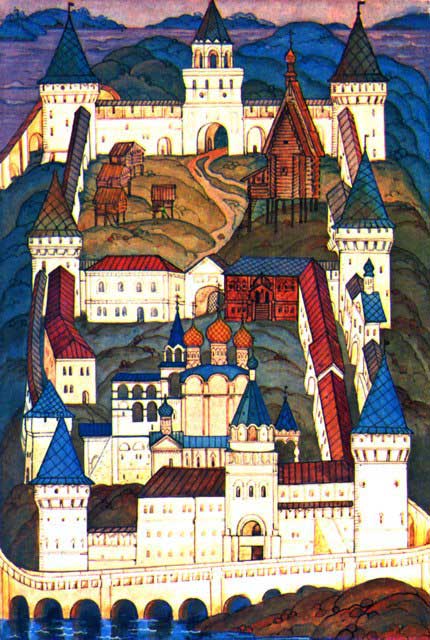
In the mid-16th century the first stone building was constructed in Kostroma in the form of the Dormition Cathedral inside the Kostroma Kremlin. Once completed, the Our Lady of St Theodore Icon was placed inside. Over the years the cathedral was rebuilt and renovated several times. More stone construction took place at the city’s Ipatievsky Monastery, which according to legend was founded in approximately 1330 by a Tatar nobleman named Chet who entered the services of Ivan Kalita and adopted Christianity. One of his descendants was Boris Godunov and once Boris had become Tsar Feodor’s closest advisor and then tsar himself, he saw that this monastery had enough money to surround it with stone walls and towers and build a new stone cathedral.
17th Century
Ivan Susanin and Mikhail Romanov
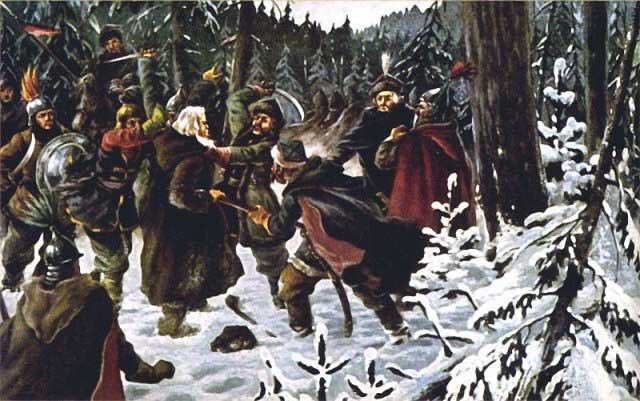
During the Time of Troubles Kostroma was pillaged by the army of Polish nobleman Aleksander Lisowski who was a supporter of the Second False Dmitry. However the most significant role Kostroma played during the Times of Troubles was connected with Mikhail Romanov. In 1613 Mikhail Romanov was elected tsar by a Council of the Land; he was 16 at the time. Mikhail was the son of Patriarch Filaret (who was at the time of his son's election a Polish prisoner) and the nun Martha. Both his parents were forcibly tonsured by Tsar Boris Godunov and exiled from Moscow. Russia was in such chaos in 1613 that at first Mikhail's whereabouts were not known but eventually he was tracked down to the Ipatievsky Monastery in Kostroma. The Polish also learned of these events and sent their own party to get to the new tsar first and kill him. On route the Polish became lost and ordered an old man named Ivan Susanin to show them the way. However Susanin tricked them and led them deep into the forest. Once the Polish learned they were being fooled they killed Susanin but it was already too late and they too perished after being unable to find their way out of the forest.
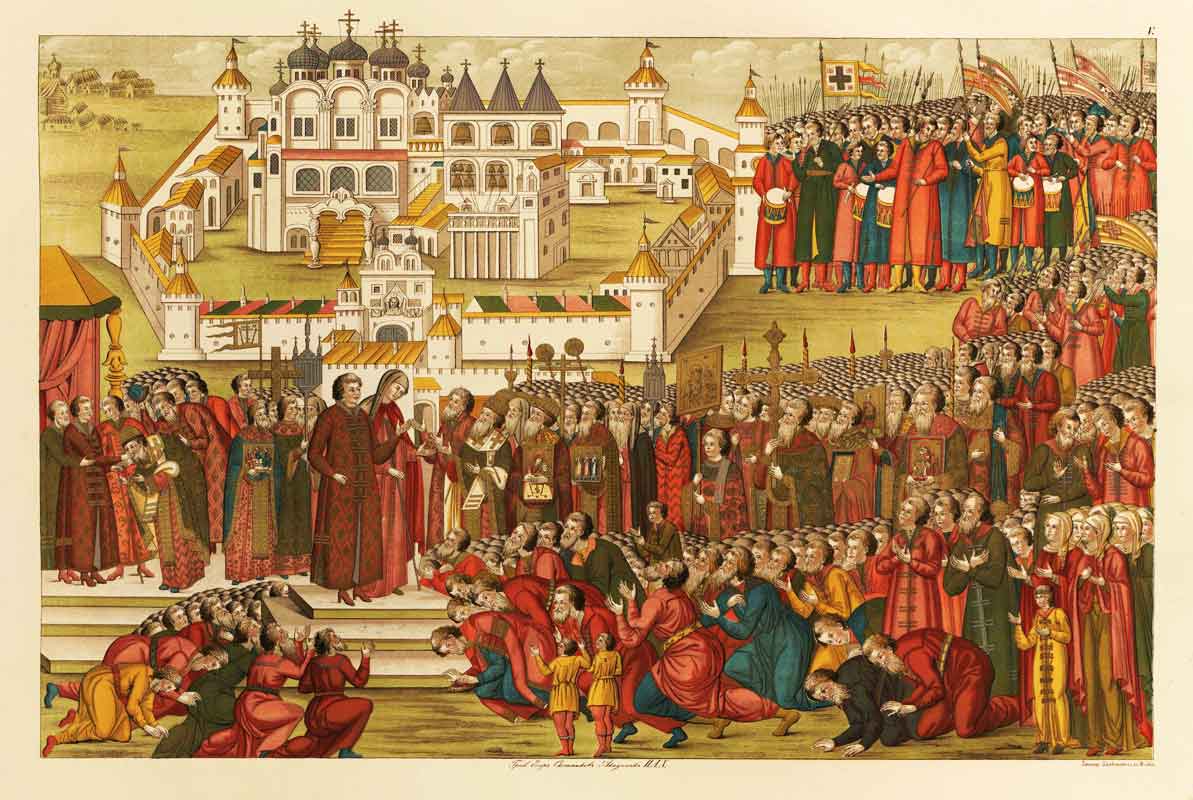
Meanwhile the Russian embassy had arrived at the Ipatievsky Monastery and informed Mikhail of his election as tsar. Mikhail and his mother refused the offer knowing full well that the task of bringing Russia back from the brink would be difficult and dangerous for any man, let alone a 16 year old. However the embassy begged and claimed that should Mikhail refuse Russia would be no more. After praying to the Our Lady of St Theodore Icon, Mikhail reluctantly accepted. The descendants of Tsar Michael (as he is more commonly known in English) would remain on the Russian throne for just over 300 years. Since these events Kostroma and the Ipatievsky Monastery remained closed to the Romanovs who considered it the 'cradle' of their house. The Our Lady of St Theodore Icon also became a family relic and non-Slavic brides even took the patronymic Fyodorovna (daughter of Fyodor/Theodore) upon converting to Orthodoxy.
18th Century
Development
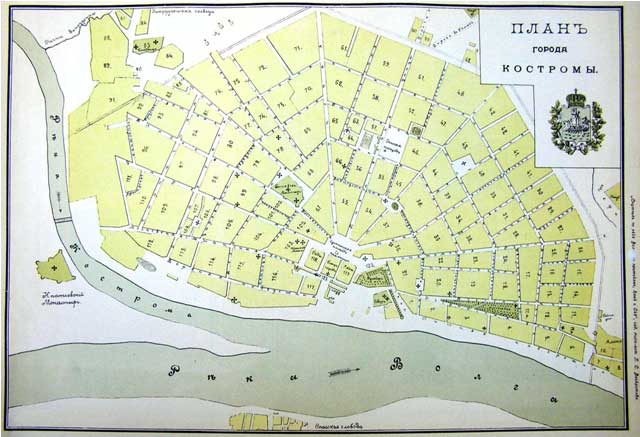
In 1708 Kostroma became part of the Moscow Governorate and from 1719 the centre of the Kostroma Province within the Moscow Governorate. The Kostroma Eparchy was established in 1744. In 1767 after visiting the city, Empress Catherine the Great commissioned a coat of arms be made for the city. It was decided to depict the galley Tver which led the flotilla welcoming the empress to Kostroma. A great fire burned down the wooden kremlin in 1773 and in 1775 work started on redeveloping the area with the construction of new trading rows. In 1778 Kostroma became the centre of the Kostroma Viceroyalty. Catherine the Great also had a city plan developed for the city in 1781 and today Kostroma is perhaps the best surviving example of 18th century city planning. From looking at a map of central Kostroma you can see how the legend came about claiming that Catherine laid her fan on a map of the city which inspired the city planners in their design. From 1796 onwards Kostroma became the centre of the Kostroma Governorate.
19th and 20th Centuries
Imperial Visits
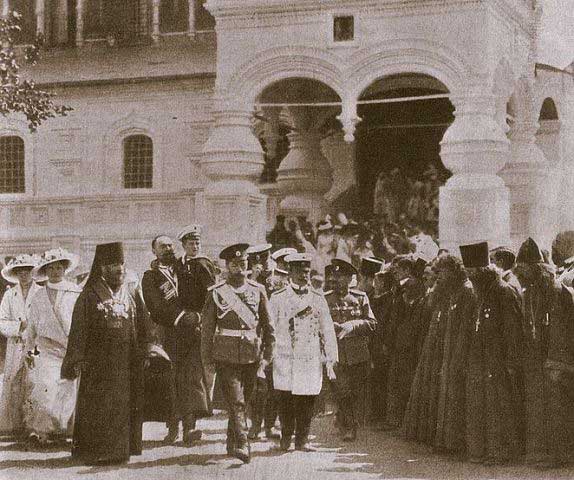
Due to the role Kostroma played in the elevation of the House of Romanov, the city naturally remained dear to the Romanovs who often visited the city. After Catherine, Paul I visited in 1797. In 1835 Nicholas I visited and renamed Kostroma's central square Susanin Square and ordered the construction of a monument to Ivan Susanin and Tsar Michael. Alexander II visited in 1858 and Alexander III with his heir, the future Nicholas II, visited in 1881. In 1913 Russia celebrated the 300th anniversary of the rule of the House of Romanov and of course as part of the celebrations Emperor Nicholas II and his family visited Kostroma and the Ipatievsky Monastery where the reign started. Whilst in Kostroma Nicholas II opened the Romanovsky Museum and laid the foundations for the 300th Anniversary of the House of Romanov Monument. The grandiose monument was set to include statues of 26 figures related to the rule of the Romanovs.
After the Revolution
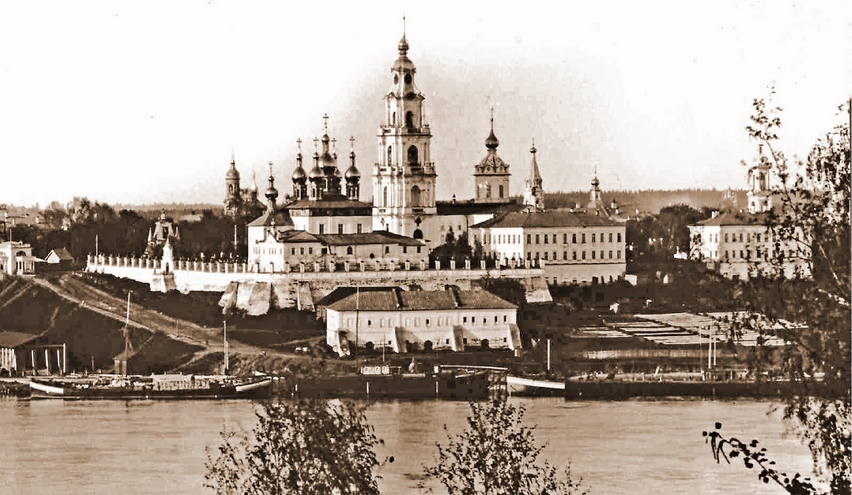
After the Revolution the Soviets began removing all traces of the Romanovs in Kostroma. The Monument to Tsar Michael and Ivan Susanin was demolished in 1918 and the square it once stood on was renamed Ploschad Revolyutsi (Revolution Square). Only the base of the 300th Anniversary of the House of Romanov Monument had been completed and in 1924 it was decided to use that as the pedestal for a statue of Lenin. The Dormition Cathedral and the Zdvizhensky Monastery which once stood in the Kostroma Kremlin were also destroyed. In 1929 the Kostroma Governorate was dissolved and Kostroma firstly became part of the Ivanovo Industrial Region and then the Yaroslavl Region in 1936. During the Second World War, hospitals, military academies and other civilian buildings were evacuated to Kostroma. In 1944 the city became the administrative centre of the newly-established Kostroma Region.

 History
History